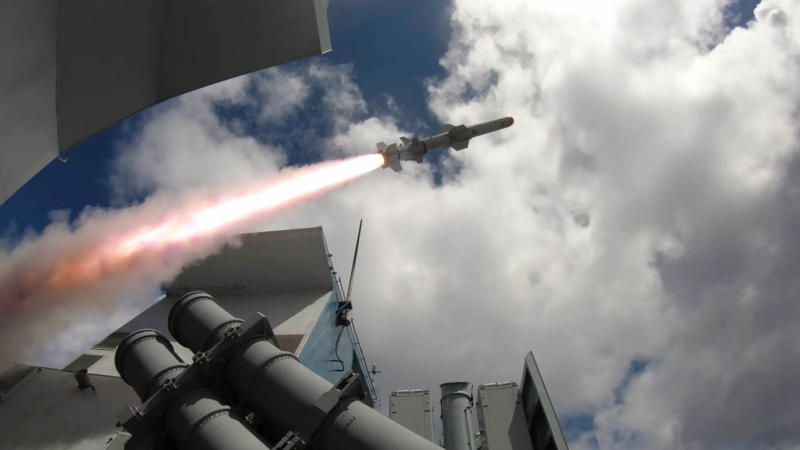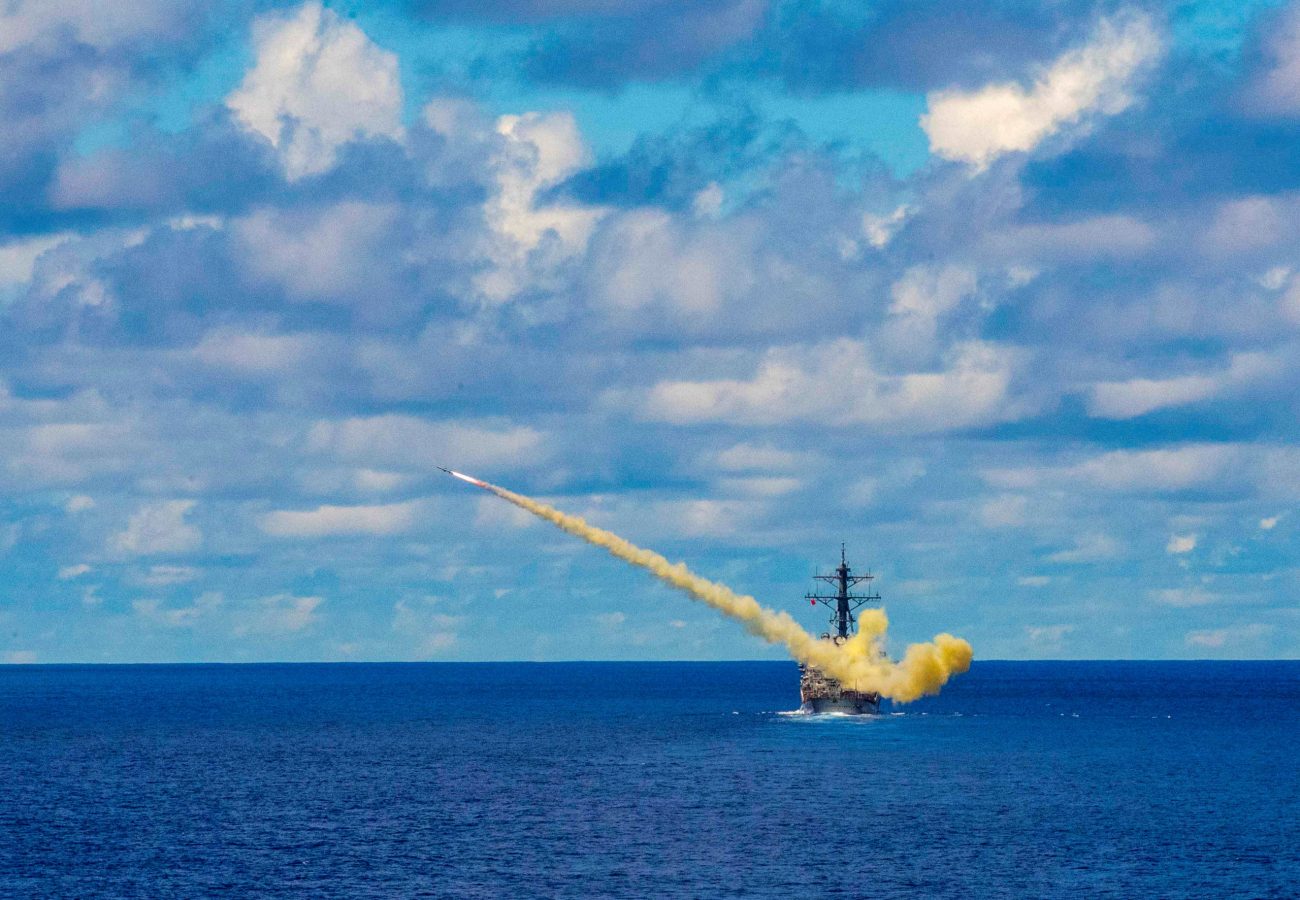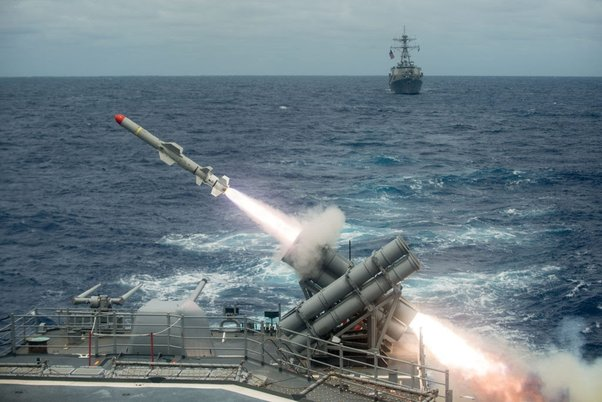On June 30, Russian forces abandoned the strategic Snake Island outpost in the Black Sea, celebrated as a victory for Ukraine. The withdrawal is significant as it would loosen Russia’s grip on Ukraine’s ports that have been under a blockade for days.
America’s Nemesis! China’s ‘Most Lethal’ Warship Flexes Muscles Near Japan & US Military Base In Okinawa
Russia claimed it had decided to leave the rocky outcrop off the southwest coast of Ukraine as a “gesture of goodwill” to demonstrate that Moscow was not impeding efforts by the UN to establish a humanitarian corridor that would allow the grain to be carried from Ukraine.
However, Ukraine and the West view it as a victory for the resisting troops.
On July 1, a day after the Russian withdrawal, a senior US Defense Department official said the Russian military decided to leave Snake Island due to significant pressure applied by the Ukrainian forces and the deployment of Harpoon missiles.
“The way we view this development [Russians leaving the Snake Island] is that the Ukrainians were very successful at applying significant pressure on the Russians, including by using those Harpoon missiles that they recently acquired to attack a [Russian] resupply ship,” the official said during a press briefing, according to Sputnik News Agency.

On June 17, EurAsian Times reported that the Ukrainian Navy claimed a devastating attack on the Russian rescue tug boat ‘Spasatel Vatsily Bekh,’ which delivered weapons and soldiers from the Black Sea Fleet to Snake Island. Two Harpoon missiles reportedly struck the Russian rescue vessel.
The US Department of Defense has now confirmed that Ukrainian forces had fired a Harpoon missile leading to the sinking of a Russian resupply ship. Snake Island, held by Russia since the beginning of the invasion, was recaptured by Ukrainian forces thanks to the sinking of the ship, USNI News reported.
The arrival of Harpoon, MRLS and other longer ranged Western weapons bolstered #Ukraine's existing arsenal, making the island relatively easy to bombard. It became indefensible pic.twitter.com/T7niLVDWv0
— H I Sutton (@CovertShores) June 30, 2022
Earlier, the Russian Cruiser Moskva was told to “go f*** yourself” by a Ukrainian service member on the island known as Zmiinyi Ostrov. This made the island the symbol of Ukrainian resistance.
Later, Ukraine sank Moskva in the Black Sea in a major setback to the Russian troops. Russian President Vladimir Putin relieved some of his top admirals following the Moskva’s sinking.
#Ukraine: Big news from the Black Sea- the Ukrainian Navy claims to have destroyed the Russian "Vasily Bekh" rescue vessel, as it travelled to the famous Snake Island; it reportedly had a Tor-M2KM SAM system on board.
The strike was filmed by a TB-2 drone; 2 munitions are used. pic.twitter.com/pCjMf2RX4d
— ?? Ukraine Weapons Tracker (@UAWeapons) June 17, 2022
While Moskva was sunk after being hit by a Neptune missile, the Russian resupply boat was hit by an anti-ship Harpoon missile supplied to Ukraine not too long ago. The shipment of ground-launched Harpoons to Ukraine and their critical launchers was announced only in late May.
Between NATO and Russia, the Black Sea functions as a strategic buffer. Therefore, Moscow has a geostrategic imperative for Russian control in the Black Sea region to project Russian strength in the Mediterranean and ensure trade access to vital southern European markets.
Ukraine wants to protect it for the same reason. It is where the Harpoon and other missiles supplied by the West come into the picture.
The Game-Changing Harpoon Missile
The Harpoon missile has been the most popular Western anti-ship weapon since the US Navy first used it in 1977.
The Harpoon is a subsonic, high-explosive, over-the-horizon, sea-skimming anti-ship missile. It uses active radar to follow its target and explodes upon contact.

The warhead on this missile weighs 221 kilograms and is designed for penetrating blast. The Harpoon’s 300 kilogram Teledyne CAE J402-400 turbojet provides propulsion, enabling it to travel at a speed of around Mach 0.5 (617 km/h).
This weapon system is adaptable and can also be used to launch missiles from trucks, submarines, and aircraft. The Harpoon has gone through several Blocks or developmental phases. Block 2 is the latest operational model in the Harpoon line with new features, including improved resistance to countermeasures and better targeting.
Further, the latest variants of the Boeing-built turbojet-powered weapon have significantly increased range and guidance capabilities over the previous type.
The Naval Air Systems Command (NAVAIR) of the US Navy announced in late May that it would begin discussions with Boeing about the production of Harpoon Coastal Defense Cruise Missiles (HCDCM).
Under the anticipated contract, a mobile coastal defense cruise missile supporting Building Partner Capacity will be designed, produced, tested, and delivered.

On June 15, a security assistance package announced for Ukraine by Secretary of Defense Lloyd J Austin III and Chairman of the Joint Chiefs of Staff Gen. Mark A Milley included two Harpoon Coastal Defense Systems, Naval News reported.
The officials had emphasized that the Harpoon systems would be installed on vehicles, with American launchers and missiles coming from allies.
Having proven their mettle in Ukraine against Russia, the missiles would also boost the confidence of the Taiwanese forces that have recently received a nod for the American Harpoons coastal defense systems.
The military of the beleaguered island country, which has been preparing for the Chinese invasion, already uses the Harpoon missiles.
Harpoons Systems Against China
In 2020, the United States declared that it would provide Taiwan with 100 land-based anti-ship missile systems together with 400 RGM-84L-4 Harpoon II missiles and four RTM-84L-4 Harpoon II training missiles, 100 launch vehicles, and 25 radar trucks for a total sum of US$2.37 billion.
In a more recent development, the Pentagon announced on March 2, 2022, that the US Naval Air Systems Command (NAVAIR) had given the military firm Boeing a contract to make Harpoon Coastal Defense Systems (HCDS) for Taiwan, as previously reported by EurAsian Times.
US State Department approves sale of 100 Harpoon Coastal Defense Systems to Taiwan https://t.co/IJooJboS17 pic.twitter.com/tZDImviCzy
— Taiwan News (@TaiwanNews886) October 27, 2020
According to Taiwanese officials, the contract was given on the same day that a senior US delegation arrived in Taiwan to discuss military cooperation in the face of “growing” Chinese military threats. China has condemned foreign assistance to Taiwan as an infringement on its internal affairs and a breach of the “One China” policy.
The US $498.3 million contract with Boeing comprises the delivery of 100 HCDS launcher/transporter units, 25 radar units, and training equipment, according to the US Department of Defense (DoD).
After the latest deliveries arrive, Taiwan will have four different versions of the same weapon, as the Navy and Air Force already have three Harpoon missile systems. The project is anticipated to be finished in December 2028.
Additionally, an arrangement to station US experts in Taiwan for maintenance work on the latter’s Harpoon missiles was extended until 2025. This American missile, one of the world’s most widely deployed anti-ship missiles, is backing its friends against their adversaries.
The design, development, and upgrades could then be expected to multiply significantly.
- Contact the author at sakshi.tiwari9555@gmail.com
- Follow EurAsian Times on Google News




